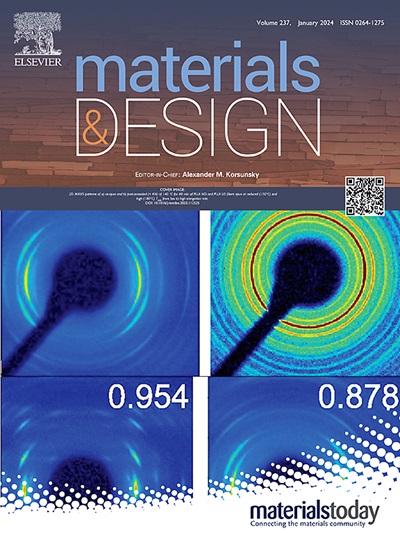Bioinspired dampers: Meniscus-inspired energy dissipation components
IF 7.6
2区 材料科学
Q1 MATERIALS SCIENCE, MULTIDISCIPLINARY
引用次数: 0
Abstract
Nature provides examples of functionally graded porous structures that absorb energy effectively, such as the knee meniscus. The meniscus features a three-layered structure with varying porosity from the outer to inner layers. The tissue's porous spaces are fluid-saturated, facilitating energy dissipation and damping. Inspired by this architecture, two 3-layered porous geometries were designed, which consisted of thin outer layers and a thicker inner layer with higher porosity and permeability. They were created using image analysis (IA), computational fluid dynamics (CFD) simulations, and pore space segmentation (PSS). The PSS geometry shows a reduced peak pore diameter ( vs ) and an increased density of lower throat lengths but a slightly larger throat radius compared to the CFD geometry. These differences significantly impact permeability, with PSS samples showing a peak of 1522 D versus 151 D in CFD samples. Energy dissipation capabilities were evaluated through cyclic compression experiments at varying rates and with different fluid viscosities. The dissipation energy density of the CFD geometry () was 2.5 times higher than that of the PSS geometry (). Scanning Electron Microscopy (SEM) compression tests revealed deformation patterns, including crease formation, bulging, and permanent deformation.

求助全文
约1分钟内获得全文
求助全文
来源期刊

Materials & Design
Engineering-Mechanical Engineering
CiteScore
14.30
自引率
7.10%
发文量
1028
审稿时长
85 days
期刊介绍:
Materials and Design is a multi-disciplinary journal that publishes original research reports, review articles, and express communications. The journal focuses on studying the structure and properties of inorganic and organic materials, advancements in synthesis, processing, characterization, and testing, the design of materials and engineering systems, and their applications in technology. It aims to bring together various aspects of materials science, engineering, physics, and chemistry.
The journal explores themes ranging from materials to design and aims to reveal the connections between natural and artificial materials, as well as experiment and modeling. Manuscripts submitted to Materials and Design should contain elements of discovery and surprise, as they often contribute new insights into the architecture and function of matter.
 求助内容:
求助内容: 应助结果提醒方式:
应助结果提醒方式:


